|
 Secure Site
Secure Site
|
 |
Archive for May, 2011
 teaching children to breath One of the simplest and most powerful practices you can teach your children is breath awareness. Diaphragmatic breathing, the relaxed, deep breathing that activates the diaphragm muscle, is the prerequisite for the subtle practices of the yoga tradition. It activates the parasympathetic nervous system, which induces a state of calm, improves focus, and reduces anxiety.
Pandit Tigunait’s son, Ishan, recalls, “When I was little, Swami Rama used to call me ‘Mr. Distraction.’ I’d flit around from thing to thing, and I was always on the move. By nighttime I was so exhausted, I couldn’t sleep.” Tigunait began to teach Ishan diaphragmatic breathing, placing a sandbag on his abdomen and lower ribs and asking him to raise the bag on each inhalation, and lower it on each exhalation.
“Maybe now a kid like me would get labeled ADHD,” Ishan observes, “but the sandbag breathing completely changed that.” After a few months, diaphragmatic breathing became automatic, he recalls. His focus began to improve, and so did the quality of his sleep. Next, he was taught how to sit quietly for a few minutes, focusing on the touch of the breath at the tip of his nostrils. As he grew older, his father introduced him to mantra meditation. Looking back, Ishan says, “The immersion in a spiritual lifestyle from a young age makes you feel so grounded in your inner personality that you naturally pursue whatever you believe to be your calling. You get that grounding from the fundamentals— sitting, breathing, asana—but even more important, it comes from the introduction to yourself that you get from meditation. You begin to see that a calm and disciplined mind is your most valuable asset.”
adapted from Yoga Journal by Shannon Sexton
 meditation supplies and tools for yoga
Now & Zen
1638 Pearl Street
Boulder, CO 80302
(800) 779-6383
Posted in yoga, Yoga Timer, Yoga Timers by Now & Zen
 What benefits can I get from meditation? Benefits may seem slow to come and are subtle at first, but are long lasting and very effective. Just like exercise, you’re not going to see the changes in your body right away, but if you keep with it, you know you will reap the benefits. It’s the same with meditation.
There are many benefits to practicing meditation, many of which have been scientifically documented and studied.
Natural Solutions Magazine, by Jill Englund, April 2011
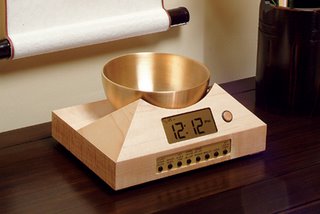 Meditation Timer and Clocks Now & Zen
1638 Pearl Street
Boulder, CO 80302
(800) 779-6383
Posted in Meditation Timers, Meditation Tools, mindfulness practice, Well-being
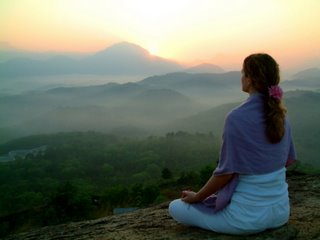 meditation sunrise How to Meditate
One of the first things you want to do is decide on a place, time, and position for meditation. Ask yourself: What’s the besttime of day for me? What is my commitment level? Can I make a commitment to do it at this time, every day? Will it be for 10 minutes, 20 minutes? How long will I commit to this? Will it be 10 days, 30 days, 60 days?
Write down your answers and journal about it. Then mark your calendar and note how you felt on the days you meditated. Writing these things down will keep you more accountable and set you up for continued success.
Find the spot you’re going to meditate in, but make sure it’s not a spot that you watch television in, or do anything else. When you train your body to recognize that “this is where I meditate,” you are supporting your meditation with a physical habit that your body recognizes.
Also think of bells and smells. Find the things that make your space sacred, create an ambiance that signifies thatthis is your space for meditation. Ask yourself: Do I need sound? Do I need candles or incense? Start with what you’re attracted to and find those things that resonate with you.
Once you’ve found your place, be sure to sit with your head, neck, and spine in alignment. In this position, you minimize the stress level for your body because it doesn’t have to work as hard to maintain balance. This position also allows you to be open to relaxation and minimizes your chances of falling asleep.
Now that you’ve found the place and time to meditate, let’s talk about the nature of your mind. It has never been trained to meditate and it’s natural that it will try to rebel. St. Teresa of Ávela said the mind before meditation is like a wild horse. When you decide to meditate, the mind attempts to buck you off and do everything it possibly can to keep you from “breaking” it. If you stay on it until you break it, that horse (your mind in meditation) will do you a great service.
I’ve found the major roadblocksfor people who are just beginning a meditation practice tend to fall into two categories: those that think they need to be perfect at meditation and give up because they miss a day or two, or feel they should have the mind of a monk with no distractions after just a few attempts. Or there are those on the opposite end of the spectrum who are sporadic about their practice and wonder why the benefits haven’t shown themselves. So when you begin meditation, expect that your mind is going to be like an untrained horse.
I find it’s best to set yourself up for success by starting with a short, 10- minute meditation. Meditating can be overwhelming for those who start with 30-minute meditations (or more), because the wild, untrained horse of your mind can be bucking and challenging you the entire time. Ten minutesis enough for people to start training themselves for meditation and feeling a little bit of success—like it’s working.
Think of meditation like exercise: You wouldn’t expect yourself to go into a gym and lift 150 pounds on your first try. You have to start with 10 pounds first and train up to it. It’s the same with meditation, and the 10-minute mark seems to be a great starting point.
When you first start to meditate, your brain usually goes off in different directions: to your grocery list or reminding you that you need to stop at the gas station on the way home. It’s a typical reaction for the “critic” in you to say “Oh no, I’m not meditating! I knew I couldn’t do this.” Instead of giving up, bring yourself back to center by focusing on your breath. At this point, you’re already in the driver’s seat of consciousness or you wouldn’t have noticed that you were distracted. Each time you catch yourself drifting off and bring yourself back to center, you are developing a muscle in your mind. Just like any other muscle, it needs to be trained, and this muscle will benefit you in countless ways.
Once you are able to reach this meditative state, you become the master of your mind (instead of a slave to it) and are able to push away the clouds of your monkey mind.
adapted from Natural Solutions Magazine, by Jill Englund, April 2011
Use our unique “Zen Clock” which functions as a Yoga & Meditation Timer. It features a long-resonating acoustic chime that brings your meditation or yoga session to a gradual close, preserving the environment of stillness while also acting as an effective time signal. Our Yoga Timer & Clock can be programmed to chime at the end of the meditation or yoga session or periodically throughout the session as a kind of sonic yantra. The beauty and functionality of the Zen Clock/Timer makes it a meditation tool that can actually help you “make time” for meditation in your life. Bring yourself back to balance.
 Meditation Timer with Chime -- The Zen Alarm Clock & Timer Now & Zen – The Meditation Timer Store
1638 Pearl Street
Boulder, CO 80302
(800) 779-6383
Posted in mindfulness practice, Well-being
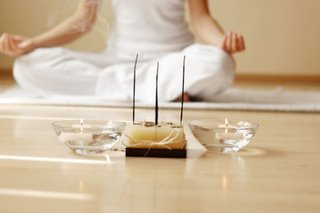 Meditation I recently stumbled across a powerful meditation technique that uses a three-dimensional mandala as the point of departure for an amazing visualization exercise. As you read it over, I invite you to guess the time and place this technique comes from:
- Imagine the entire universe. Hold it as clearly and distinctly in your mind as you possibly can. See the whole cosmos as if it’s inside an unimaginably vast transparent sphere.
- Visualize our sun and the stars in our sky. Then picture all the living beings on the earth or in the sea. Observe them calmly.
- Call to mind the limitlessly vast Supreme Intelligence who created this universe. Ask it to enter your awareness, bringing with it all the divine forces that exist inside it. Notice that the Supreme Being and all its divine energies and all the creatures and objects and worlds it has created exist together in seamless unity. Imagine the Supreme Being’s unlimited power and awareness extending to all infinity.
- Now bring this vision inside yourself, as if you are that all-pervading Supreme Intelligence. Hold the entire cosmos and all its powers and all its creatures inside your own all-pervading awareness.
- Then let go of the visual images you’ve been imagining. Simply let all the scenes you’ve been visualizing dissolve completely. Instead, focus only on the living reality of the all-pervading Cosmic Intelligence who is silently present.
- Don’t allow any sense of separateness to enter your awareness. Just immerse yourself totally in the divine presence.
- Surrender yourself completely to the Supreme Being who, at this very moment, is holding you in its perfect, unitary awareness. The Supreme Intelligence is totally present in this moment, and there is no distinction whatever between it and you.
- Mentally saluting the Supreme Being, shift your awareness back to your physical body in this physical room in this physical universe, and open your eyes.
This exercise carries your awareness from a concrete image into a higher state of consciousness that is beyond images altogether. It seeks to unite your individual awareness with the cosmic consciousness which holds the whole universe in its awareness the way you hold mental images in yours. Any guesses where it comes from?
Here’s the surprising answer: This meditation was practiced in the city of Rome in the 3rd century AD. It is almost certainly the technique taught to Caesar Gallienus, who ruled the Roman Empire from 253 to 268 AD, and his wife Cornelia. How do I know that? Because it comes from the Enneads, a book written by one of the most famous spiritual masters of the Roman world. His name was Plotinus, and he was the teacher of the emperor and empress as well as numerous prominent members of the Roman Senate. Plotinus concluded the exercise with this advice for the meditator: “If you imagine you’re different from the all-pervading Divine Being, you are not yet in the fully illumined state. When you and it are perfectly one, with no sense of even the possibility that you could be two, then you have attained real understanding and a true perception of your highest self, the true inner being which never departs from complete perfection.”
 Did the ancient Greeks and Romans—the founders of Western civilization—practice yoga? Did the ancient Greeks and Romans—the founders of Western civilization—practice yoga? The astonishing answer is that they certainly practiced something very like it. In southern Europe 2,000 years ago, the deepest state of meditation (samadhi in Sanskrit) was called henosis. Heno is the Greek word for “one”; henosis literally meant “one-pointed awareness” or “unitary consciousness.” There were many centers where you could go to learn how to stabilize your mind in henosis—in the Platonic Academy in Athens, for example, or at the great university in Alexandria, Egypt, or in the schools of extraordinary masters like Plotinus in Rome.
The Oracle at Delphi—the spiritual center of the ancient Greek world—is famous for its simple advice: “Know thyself.” Spiritual teachers like Plotinus took this suggestion to heart. He urged his disciples to “close your eyes and awaken to another way of seeing. This is a skill everyone possesses but few choose to use.” Plotinus died in the year 270. His final words were: “Try to unite the divinity in yourself with the divine in all things.”
Meditation goes back a long way in the Graeco-Roman world. Empedocles, one of the most popular of the Greek sages, was born in Sicily at the beginning of the 5th century BC, 700 years before Plotinus was born. Here’s what Empedocles had to say about the journey within:
You must plunge beneath your crowded thoughts and calmly contemplate the higher realities with pure, focused attention. If you do this, a state of inspired serenity will remain with you throughout your life, shaping your character and benefiting you in so many ways. But if you direct your attention instead to the trivial things most people obsess about, the silly nonsense that dulls their minds, you’ll just acquire more objects which you’ll only lose anyway.
Like many of the ancient Greek masters, Empedocles also spoke of reincarnation when he said, “The wise never imagine that man lives only for one lifetime, that before and afterwards he doesn’t exist at all. Souls, who through their own error fall under the power of fear and delusion, are forced by eternal law to wander for long cycles taking birth in mortal bodies, exchanging suffering in one type of body for suffering in another. I’m one of these exiles myself, wandering far from my heavenly source, having mistakenly put my faith in this violent, crazy world.”
Lasting happiness and peace come to those “who have gained the true wealth of divine understanding,” he went on to explain. They realize that the Divine “isn’t something you can see with your eyes or hold in your hands, it doesn’t have a face or feet or gender, but is pure consciousness which extends throughout the entire cosmos…. Divine Being is without beginning or end; it is nothing but consciousness in any direction, and eternally rejoices in the encircling silence.”
It is our task, according to Empedocles, to reclaim this divine awareness, lost when we forgot our undying inner self and identified completely with a body. The sages who have attained self-realization “have no more part in sorrow or weariness,” he said.
***
Today we think of the ancient Greeks as the men who invented science and democracy. We forget that in their own time many of them were recognized as spiritual adepts. Our modern history books, for example, record that Heraclitus (who lived at about the same time as Empedocles) taught that the universe was created from the element fire. This is a gross oversimplification of his ideas, but more importantly, it ignores the major emphasis he placed on inner life. While many of his contemporaries explored the secrets of the natural world, Heraclitus focused on a more central mystery. “I investigate myself,” he said, maintaining that hidden in the deepest recesses of spirit are the greatest truths, and that this inner quest is endless. “You’ll never find the limits of the soul, no matter how many roads you travel,” he continued, but went on to say that inquiring into the nature of our innermost self is exactly what we must do. “Self-knowledge is every person’s birthright,” he insisted.
Today we consider meditation, the concept of reincarnation, and the recognition of the essential unity of all things to be purely Eastern beliefs. We’ve forgotten that these teachings were once an integral part of our own Western spiritual heritage. While most of this inner lore was lost in the West, it has been lovingly preserved in India. And so, just as Columbus had to sail west to reach the East, today we have to travel east to rediscover the teachings and techniques at the root of Western history. Yoga is a truly universal tradition, an invaluable key to self-knowledge, a common thread of inner wisdom shared by all times and cultures.
adapted from Yoga International by Linda Johnsen, she is the author of Lost Masters: Sages of Ancient Greece.
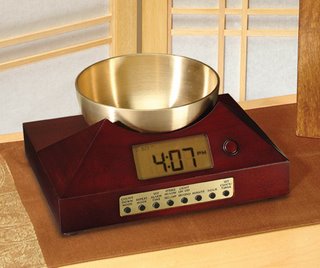 meditation tools and timers Now & Zen
1638 Pearl Street
Boulder, CO 80302
(800) 779-6383
Posted in Meditation Timers, Meditation Tools, mindfulness practice
 how to meditate Just as a musician prepares by playing scales, a meditator begins with familiar rituals. Find a quiet place, loosen constricting clothes, and…
Sitting on a chair or in a comfortable, cross-legged meditation pose, with your head, neck, and trunk in alignment, close your eyes.
Turn your attention to the touch of the breath in the nostrils, observing it for several minutes. Feel the cool touch of the inhalation, and the warm touch of the exhalation.
As the breath changes direction, keep your focus—this is a time when it is easy for the mind to wander. Relax and follow the breath, sensing each inhalation and each exhalation as well as each transition between breaths.
Let the feeling of the breath become a resting place for your attention, and gently relax your mind.
Now silently recite the soham mantra in coordination with your breath. Inhaling, think the sound so…. Exhaling, think the sound hum…. Let each sound flow smoothly into the next.
Other thoughts will come and go, but they are not the focus of your attention. Simply continue to follow the flow of the breath at the nostrils, letting the sound soham flow in your mind.
When your mind is refreshed, slowly open your eyes into your palms and draw your awareness outward once again.
adapted from Yoga International by Rolf Solvik May/June 2007
 meditation tools and timers with chimes Now & Zen
1638 Pearl Street
Boulder, CO 80302
(800) 779-6383
Posted in Uncategorized
 Meditation, a way of calming yourself Meditation is a practical means for calming yourself, for letting go of your biases and seeing what is, openly and clearly. It is a way of training the mind so that you are not distracted and caught up in its endless churning. Meditation teaches you to systematically explore your inner dimensions. It is a system of commitment, not commandment. You are committing to yourself, to your path, and to the goal of knowing yourself.
Meditation is not a ritual belonging to any particular religion, culture, or group. It is a method of knowing the one reality from which all religions spring. For example, the Bible clearly says, “Be still and know that I am God.” Learning how to be still is the method of meditation. And if you meditate regularly you will find that you have become more calm, yet alert to what is needed in the present moment.
Most people associate calmness with passivity, but the peace that meditation brings releases energy. Worry and preoccupation dissipate your strength. Meditation frees the energy that has been bound in your mental discord so that you can apply yourself one-pointedly to whatever you decide to do. Meditation will lead your mind to become more concentrated, so that you can fully focus on whatever you choose. Because of this, those who meditate will learn almost anything more easily and more quickly.
adapted from Yoga International by Swami Rama
 meditation tools Now & Zen
1638 Pearl Street
Boulder, CO 80302
(800) 779-6383
Posted in Meditation Timers, Meditation Tools, mindfulness practice
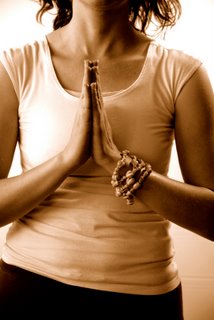 daily meditation represents a commitment When you decide to meditate each day, you are acknowledging the importance of spiritual discipline, your desire to be a meditator, and the call of an inner voice that really transcends ordinary time. Daily meditation represents both a commitment and an opportunity. With each passing day the intersection of chronos and kairos, of ordinary measured time and your own inner sense of time, leads you back to your meditation seat to nurture your practice again.
adapted from Yoga International by Rolf Solvik, June/May 2007
 meditation tools and timers with chimes
Now & Zen
1638 Pearl Street
Boulder, CO 80302
(800) 779-6383
Posted in Meditation Timers, Meditation Tools, mindfulness practice
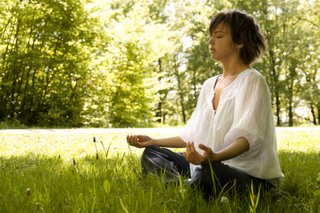 what time is best to meditate? Are certain times more favorable for meditation than others? Yes. In the morning and evening, when day and night mometarily mingle, nature draws the mind inward. As a result, many choose to med-itate just after awakening or in the evening, near sunset.
Unfortunately, many of us have lost our sensitivity to nature’s influence, and we do not feel the internal pull created by the joining of night and day. But by paying attention as dawn or dusk approaches, we can observe nature’s work. Winds quiet down, animals hush, and the sky floods with color. The mind is also quieted in these moments, and as night and day briefly embrace, our concentration and our sense of inner balance deepen.
There are some practitioners who choose night hours for meditation. A familiar verse in one of yoga’s most beloved texts, the Bhagavad Gita, explains, “That which is night for most living beings is like day for one whose senses are controlled; that which is day for most living beings is like night for the introspective sage.” In the silence of night, when others sleep, a meditator finds pleasure in meditation. But the outward affairs of daily life are like sleep to a sage. That is why some meditators choose to practice at bedtime or in the very early morning when the darkness is conducive to meditation.
Although these various times are all recommended, it is important not to neglect one more suggestion, which is to meditate at the time that works best for you. That might mean meditating at the beginning of a lunch break, at the end of the workday, or when your children are napping. Finding the time that best fits your personal schedule makes it more likely that you will settle into a regular practice.
adapted from Yoga International by Rolf Solvik, May/June 2007
Use our unique “Zen Clock” which functions as a Yoga & Meditation Timer. It features a long-resonating acoustic chime that brings your meditation or yoga session to a gradual close, preserving the environment of stillness while also acting as an effective time signal. Our Yoga Timer & Clock can be programmed to chime at the end of the meditation or yoga session or periodically throughout the session as a kind of sonic yantra. The beauty and functionality of the Zen Clock/Timer makes it a meditation tool that can actually help you “make time” for meditation in your life. Bring yourself back to balance.
 Timers with chime, perfect for meditating day or night... Now & Zen – The Zen Alarm Clock & Meditation Timer Store
1638 Pearl Street
Boulder, CO 80302
(800) 779-6383
Posted in intention, Meditation Timers, Meditation Tools, mindfulness practice
 three meditation tips Establish your basic practice.
Make sure you have the essentials of your meditation practice clear in your mind. In general, this means establishing a basic sitting posture, training yourself to breathe comfortably, and witnessing your mind from an inner distance—either focusing on your breath or a mantra.
Add time in small increments.
Begin by sitting for 10 to 12 minutes on a regular basis. When you are ready, increase your sitting time to 15 minutes. Then, work your way up to 20 minutes. At that point, your meditation will be well established.
Don’t take on too much.
Ultimately, the length of your meditation will be determined by your mind’s capacity to concentrate. The key to sitting longer is to relax and deepen the process of concentration. From a practical point of view, when the mind becomes so tired of concentrating that you are no longer engaged in the process, the meditation is moving toward its end.
adapted from Yoga International by Rolf Sovik, May/June 2007
Use our unique “Zen Clock” which functions as a Yoga Timer. It features a long-resonating acoustic chime that brings your meditation or yoga session to a gradual close, preserving the environment of stillness while also acting as an effective time signal. Our Yoga Timer & Clock can be programmed to chime at the end of the meditation or yoga session or periodically throughout the session as a kind of sonic yantra. The beauty and functionality of the Zen Clock/Timer makes it a meditation tool that can actually help you “make time” for meditation in your life. Bring yourself back to balance
 Meditation Timers and Clocks with Chime in Bamboo, Walnut, Maple, and Black Lacquer Now & Zen – The Zen Timer Store
1638 Pearl Street
Boulder, CO 80302
(800) 779-6383
Posted in Meditation Timers, Meditation Tools, mindfulness practice, Well-being, Zen Timers
 tea time One of India’s most beloved pick-me-ups, chai (spiced milk mixed with black tea) is becoming a mainstay in yoga communities around the world. Why? According to ayurveda, its unique mix of ingredients makes it a healthy alternative to coffee or plain tea. The cardamom and milk balance out the stimulating effects of caffeine and the ginger helps you digest the milk and sugar. On high heat bring 1 cup of water and a 1⁄2 inch piece of fresh ginger (peeled and grated) to a boil. Then add:
1 tablespoon of black tea, 1 cup of milk, and 1⁄2 tablespoon of sugar. Bring this mixture to a boil, remove the pot from the stove, and add a pinch of cardamom. Cover and let sit for several minutes. Strain and enjoy.
Prep Tip: Speed up the process with two pots. Boil the milk and sugar in one pot, and the water, ginger, and black tea in another. Then combine and add the cardamom. (Don’t boil the ginger with the milk—that will cause your chai to curdle.)
Variations: For more exotic flavor, add a pinch of saffron with the sugar and a dash of rosewater with the cardamom, or a pinch each of cloves, cinnamon, and nutmeg with the ginger, or a dash of vanilla extract with the cardamom. For caffeine-free chai, substitute dandelion root, peppermint leaves, or lemon grass for black tea.
adapted from Yoga International by Crystal Ketterhagen, Spring 2010
“The Zen Alarm Clock & Chime Timer‘, uses soothing acoustic chimes that signal it’s time – gently and gradually.
Rather than an artificial recorded sound played through a speaker, the Zen Clock features an alloy chime bar similar to a wind chime. When the clock’s alarm is triggered, its chime produces a long-resonating, beautiful acoustic tone reminiscent of a temple gong.
 Tibetan Bowl Clock and Timer Now & Zen – The Zen Timer Store
1638 Pearl Street
Boulder, CO 80302
(800) 779-6383
Posted in Well-being, zen
« Previous Entries
Next Page »
|
|
|
|